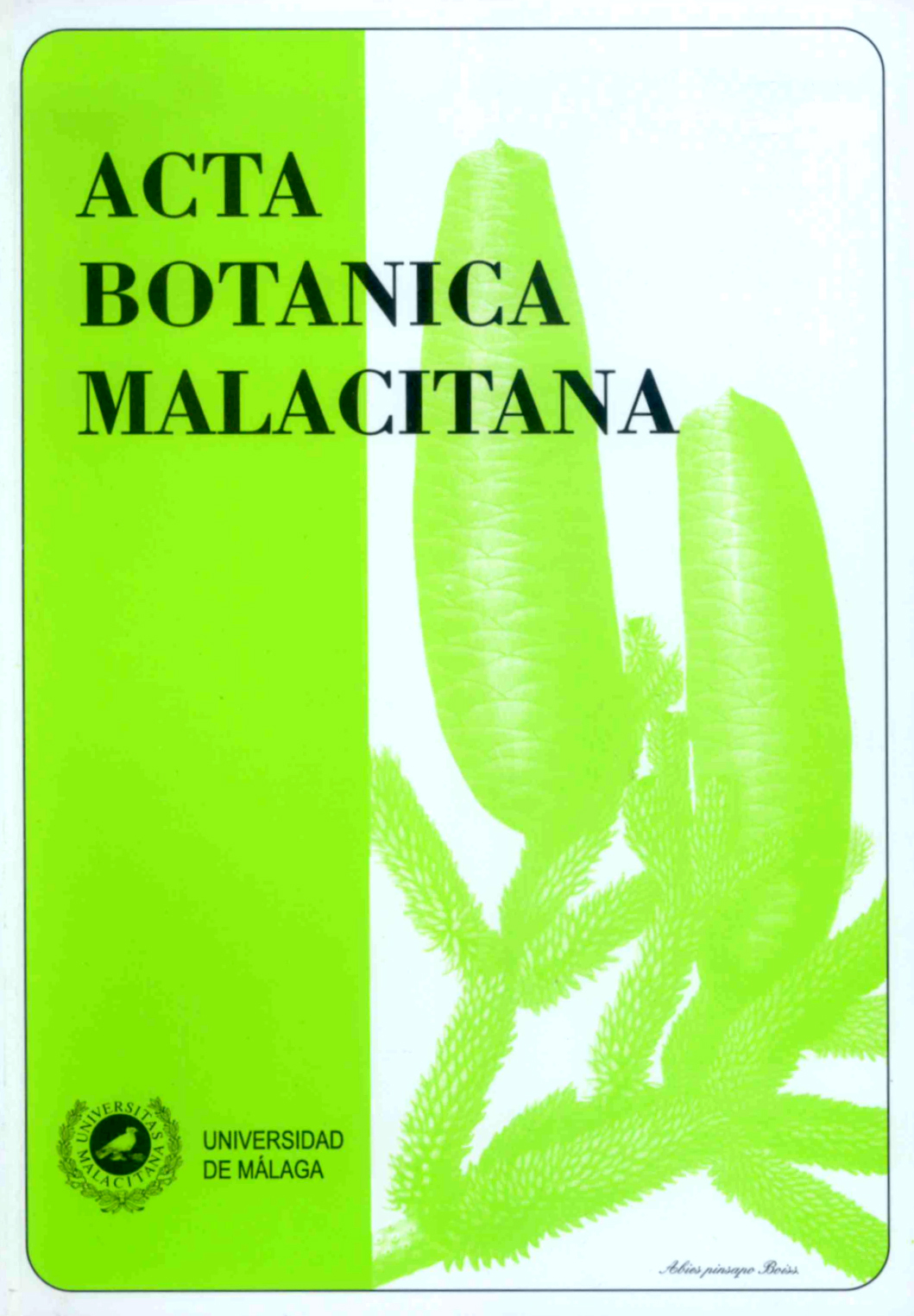New genetic data on Genista anglica L. versus Genista ancistrocarpa Spach (Fabaceae, Fabales) in the Iberian Peninsula and Morocco. Phylogeographic clues. Novos dados genéticos sobre a Genista anglica L. versus Genista ancistrocarpa Spach (Fabaceae, Fabales) na Península Ibérica e Marrocos. Indícios filogeográficos
DOI:
https://doi.org/10.24310/abm.v39i1.2581Abstract
The genetic analysis through the nuclear ribosomal DNA of some Iberian and NW Morocco populations of Genista ancistrocarpa Spach and G. anglica L. has validated the separation of these two sister taxa as two distinct genetic entities, strengthening the already described morphological differentiation. The studied populations neatly show the G. ancistrocarpa as a coastal taxon with occidental Iberian and NW Morocco distribution, contrary to the G. anglica. The distribution areas of the two species appear to be distinct and with an important biogeographical significance. The coastal clade is determined by populations of G. ancistrocarpa, and outlines a biogeographic region that seems to depart genetically from the remaining peninsular populations, also in several molecular analyses of other plants and animals by many authors, supporting the idea of a distinct evolution from the Miocene onwards, when the installation of dry and hot conditions has pushed the moisture-dependent populations of G. ancistracarpa toward the westernmost sectors of Iberia and Morocco with an atlantic influence.Downloads
Download data is not yet available.
Metrics
Metrics Loading ...
Downloads
Published
2014-12-01
How to Cite
Geraldes, M., Fonseca, J. P., Neto, C., & Costa, J. C. (2014). New genetic data on Genista anglica L. versus Genista ancistrocarpa Spach (Fabaceae, Fabales) in the Iberian Peninsula and Morocco. Phylogeographic clues. Novos dados genéticos sobre a Genista anglica L. versus Genista ancistrocarpa Spach (Fabaceae, Fabales) na Península Ibérica e Marrocos. Indícios filogeográficos. Acta Botanica Malacitana, 39(1), 45–54. https://doi.org/10.24310/abm.v39i1.2581
Issue
Section
General
License
All information related to the licensing of published works in Acta Botanica Malacitana and copyright can be found in our Editorial Policy.







1.png)
